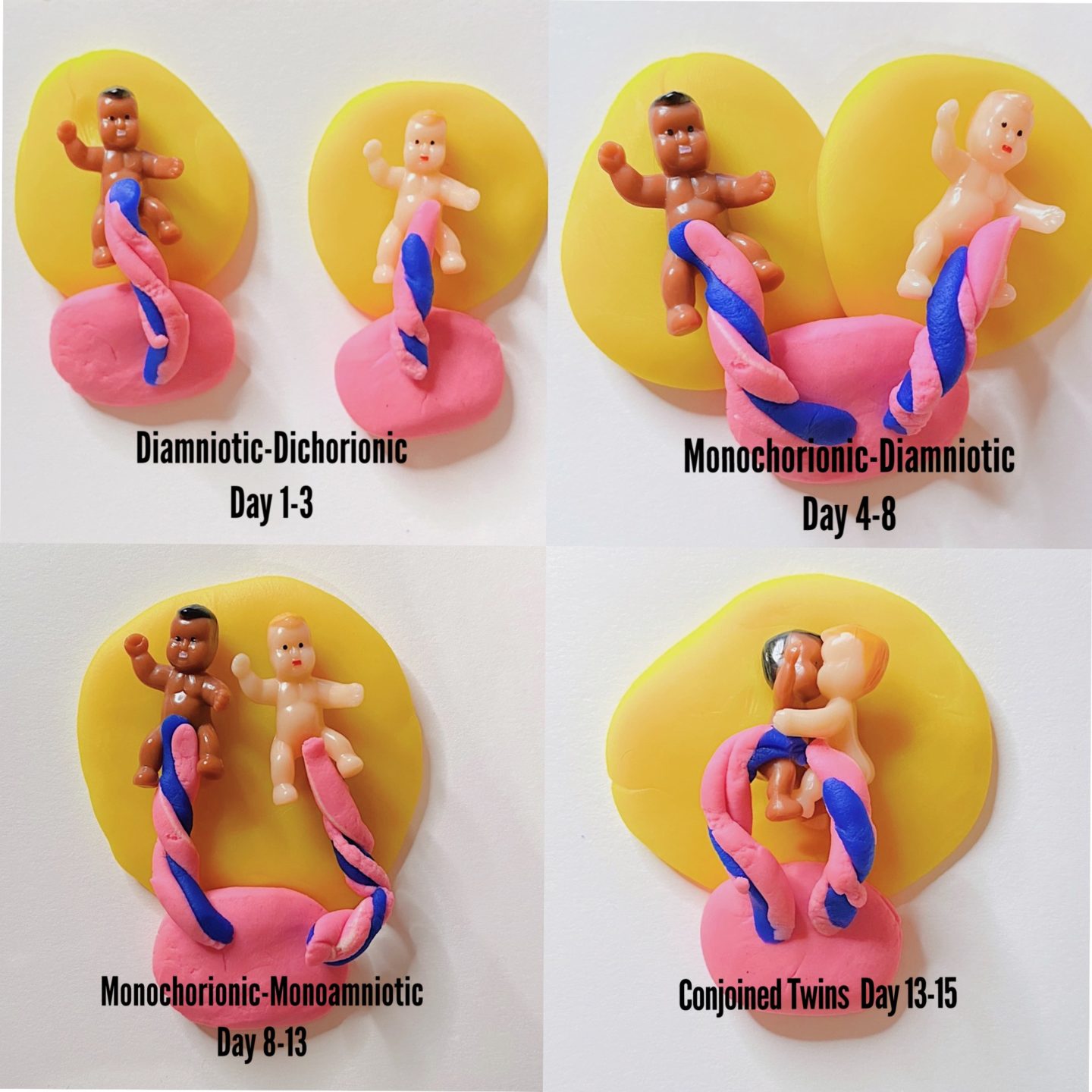TWINS! Some of my favorite to deliver! I think we can all agree that there’s just something so special about twins. Did you know there are different kinds of twins?! There are 4 kinds of Monozygotic Twins (this means ONE sperm fertilized ONE egg and then split!) Okay, let’s talk about it!
¡GEMELOS! ¡Algunos de mis partos favoritos! Creo que todos podemos estar de acuerdo en que hay algo tan especial en los gemelos. ¿Sabías que hay diferentes tipos de gemelos? Hay 4 tipos de gemelos monocigóticos (¡esto significa que UN espermatozoide fertilizó UN óvulo y luego se dividió!) ¡Bien, hablemos de ello!
+ Diamniotic- Dichorionic
(two amniotic sacs, two placentas) These kiddos’ cells split *very* early on during the Morula stage, which occurs around Day 1-3 after fertilization
+ Monochorionic-Diamniotic
(one placenta, two amniotic sacs) These babes split during the Blastocyst stage around Day 4-8
+ Monochorionic-Monoamniotic
(one placenta, one sac) These twinkies split during the implanted blastocyst stage around Day 8-13. They twins are at an increased risk of having their cords tangled up because they are swimming around in the same sac!
+ Conjoined twins
(one placenta, one sac, babes conjoined together) These sweet babies split during the formed embryonic disc around Day 13-15. Most commonly they are conjoined by their torsos.
+ fun fact
– 66% of all twins are dizygotic which means TWO separate eggs were fertilized!- the best way to know which type of twins you’re carrying is by getting an early ultrasound
+ Diamniótico- Dicoriónico
(dos sacos amnióticos, dos placentas) Las células de estos niños se dividen * muy * temprano durante la etapa de mórula, que ocurre alrededor del día 1-3 después de la fertilización
+ Monocoriano-diamniótico
(una placenta, dos sacos amnióticos) Estos bebés se separan durante la etapa de blastocisto alrededor del día 4-8
+ Monocoriónico-Monoamniótico
(una placenta, un saco) Estos gemelos bellos se dividieron durante la etapa de blastocisto implantado alrededor del día 8-13.¡Estos tipos de gemelos corren un mayor riesgo de que sus cordones umbilicales se enreden porque están nadando en el mismo saco!
+ Gemelos unidos
(una placenta, un saco, bebés unidos entre sí) Estos bebés se dividen durante el disco embrionario formado alrededor del día 13-15. Por lo general, están unidos por sus torsos.
+ fun fact
– ¡El 66% de todos los gemelos son dicigóticos, lo que significa que se fertilizaron DOS óvulos separados!– la mejor manera de saber qué tipo de gemelos está embarazada es mediante un sonograma durante el primer trimestre
WHAT ARE YOUR THOUGHTS? // QUE PIENSAS?

